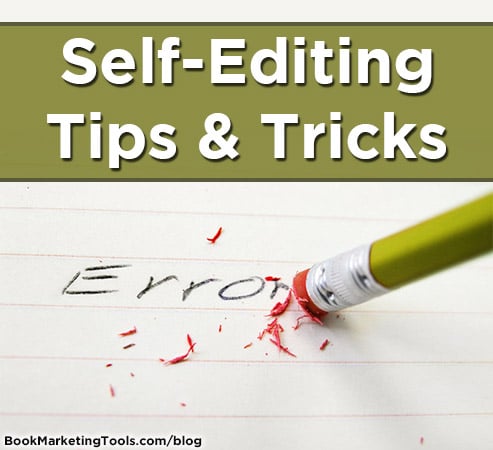While we definitely recommend that all authors get someone to edit their books, sometimes that just isn’t possible. Even if it is, you can save money by doing a few passes before you pass off the manuscript to someone you’re paying. In this guest post, author Carolyn Hamilton shares some great tips that can help you to self-edit your book.
I’ve been a magazine editor and a contest judge and recently I’ve edited other writers’ manuscripts. Spelling errors happen too often, and even if they’re just typos, they SHOULD NOT BE THERE. They make your writing look unprofessional and—dare I say it—stupid.
I’m also amazed at the homonyms that frequently pop up.
Homonyms are words that are often “misspelled” by using a similar word that has its own meaning. Sometimes they’re just typos, but sometimes writers—I’ll call them “careless” writers rather than “illiterate”—don’t seem to get the use differences between “you’re” and “your”, “it’s” and “its.”
As dear to my dreams as spell check is, it won’t save you in the homonym department.
Here are some of the frequent and embarrassing little homonyms or similar words you want to proof carefully for:
- four and fore
- you’re and your
- it’s and its
- on and one
- their, there, and they’re
- the and then
- here and her
- whose and who’s
- though, through and thought
- to and too
More Self-Editing Tips
I’ve read that editing is difficult because we don’t “read” the entire word. Your brain “sees” a word as a kind of symbol or picture on the page.
The way the brain works is that as we learn words we train neurons to recognize them as complete, not parts of the words. As long as the number of characters are correct and the first and last letter of the word are correct, we will understand it.
Here’s an example from www.livescience.com: “It deson’t mttaer in waht oredr the ltteers in a wrod aepapr, the olny iprmoatnt tihng is taht the frist and lsat ltteer are in the rghit pcale. The rset can be a toatl mses and you can sitll raed it wouthit pobelrm.”
Hmmmm…
Here’s an easy trick to line-edit your manuscript:
Double-space your typing, print it out, then take a blank sheet of white paper and place it over an entire typed page except for the bottom line. Read that last line carefully for punctuation and spelling.
Raise the blank sheet to reveal the line above that. Edit that line by itself.
Continue to edit line by line, moving up the page from the bottom. This way you are not distracted by the meaning of what has been written; you can focus totally on the spelling and punctuation.
Spelling errors and typos and homonyms slow pacing by interrupting the reader’s focus on the characters and action in your story-telling. They distract from your story by making your reader wonder why you didn’t catch that. They stand out on the page like signposts that say, “I didn’t care about my writing enough to practice accepted standards of grammar and punctuation.”
Grammar and punctuation are meant to help us communicate effectively. A book without spelling errors and typos and homonyms is perceived by the buying public as being professional and worth reading.
Carolyn V. Hamilton is a published author of both fiction and non-fiction. Professionally trained as an illustrator and graphic designer, she spent over 3 decades working as a marketing executive and copywriter in the real world of “Mad Men.” Currently she is completing a new short writers’ guide, “Power Editing For Fiction Writers.” Visit her writers’ website at www.carolynvhamilton.com and sign up for her FREE newsletter, SECRETS OF FICTION WRITING SUCCESS!

